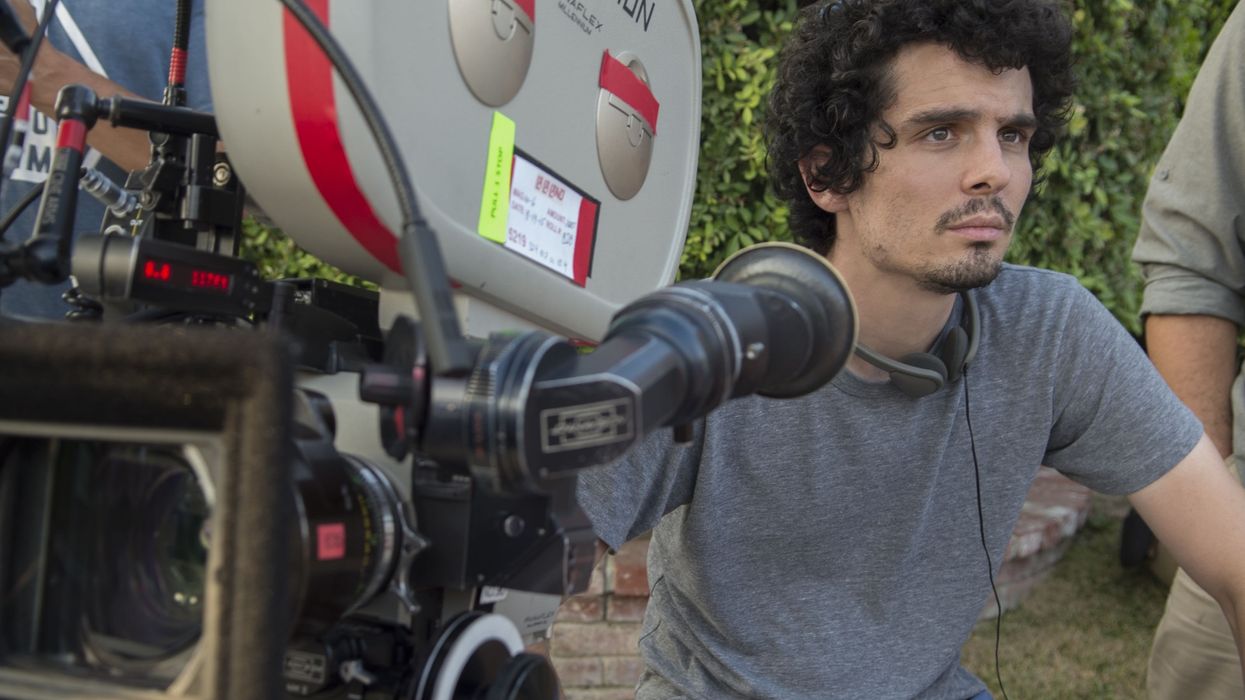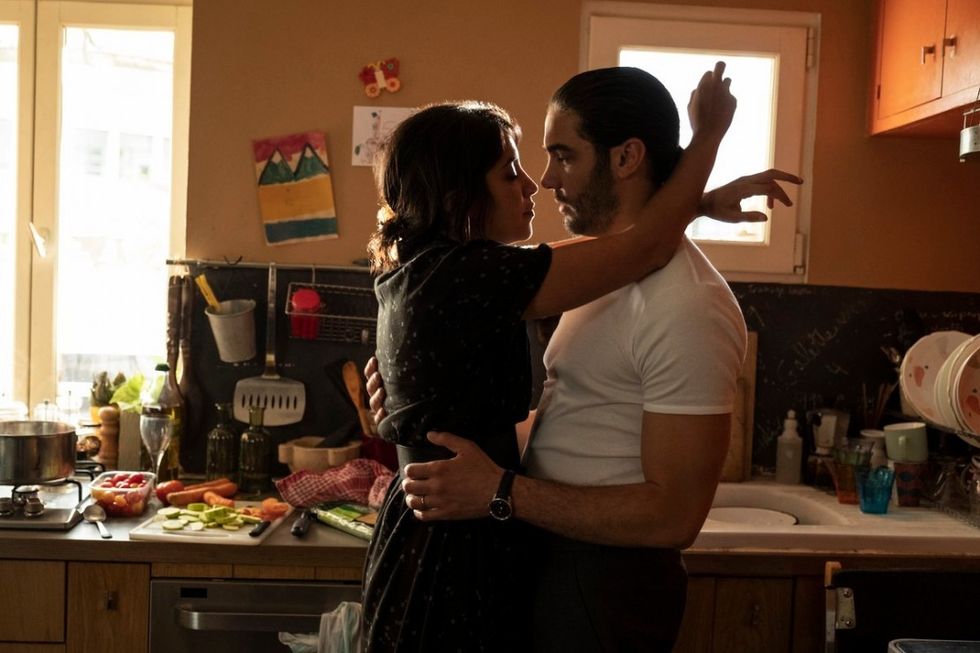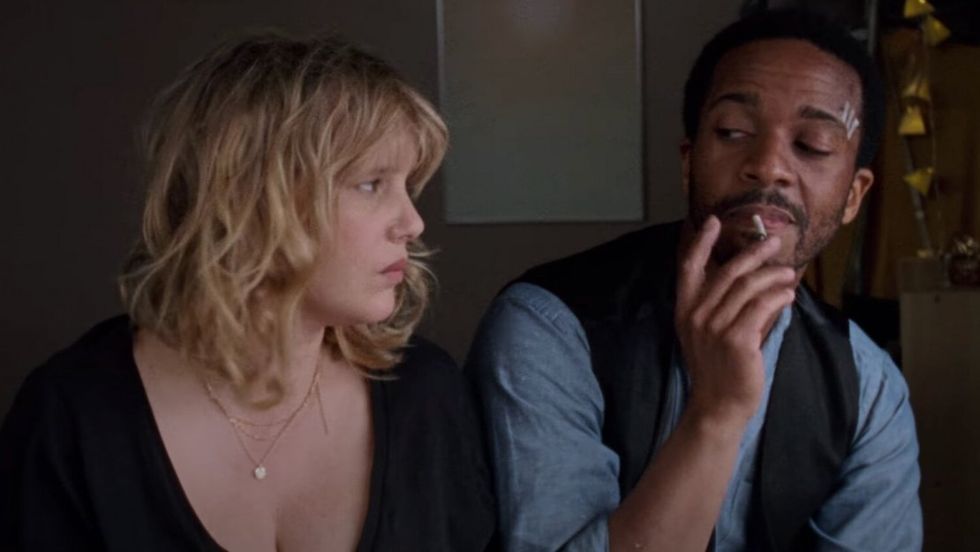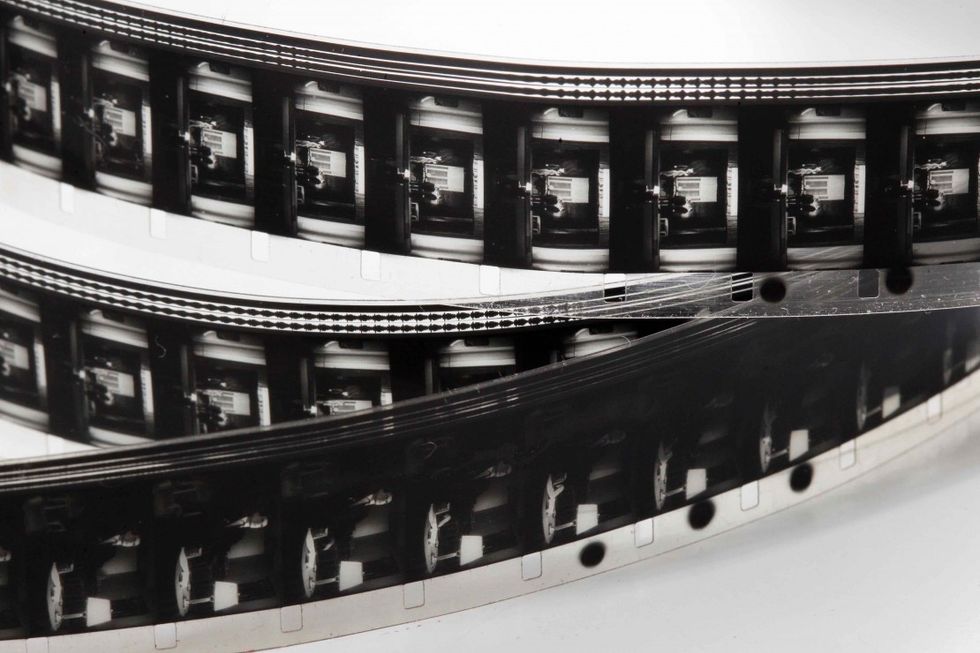How Did Damien Chazelle Convince Netflix to Let Him Shoot 16mm?
Find out how and why the streaming giant changed its rules for the filmmaker.

In 2014, Netflix began shooting and delivering all of its Originals in 4K, primarily, it explained, to future-proof content as more and more of us replaced HD with UHD capable TVs. Not more than 10% of a show’s runtime would be allowed in anything less than a 4K UHD capture, a demand from which it has rarely if ever deviated—until now.
The Eddy, a new 8-episode musical drama set in Paris which is set to land on May 8th, has had a full quarter of its production filmed on 16mm. The fact that it was greenlit is a testament to both the creative clout of executive producer and director Damien Chazelle as well as the streamer’s willingness to work with creative intent.
Conceived by Grammy-winning songwriter Glen Ballard, scripted by BAFTA-winner Jack Thorne (This Is England) and chosen by Chazelle as his first TV project following the Oscar success of La La Land and First Man, The Eddy dramatizes racial tensions and family relations centered in and around a present-day Parisian jazz club.
Chazelle, who lived in Paris and is fluent in French, directed the first two episodes which were lensed by Éric Gautier AFC, a seasoned DP with a CV for directors including Alan Resnais (Wild Grass), Olivier Assayas (Irme Vep), Walter Salles (The Motorcycle Diaries), and Sean Penn (Into the Wild).
“We want nothing to do with perfection. Digital is so perfect and you can control it so perfectly but that was not what we wanted to achieve.” - Éric Gautier
“Damien invited me to photograph La La Land but I was already committed to another project,” Gautier reveals. “The next time he came to Paris he asked me. We got along so well, there was no need to talk really, it was a great collaboration.”
Like Chazelle, who famously segued his experience as a jazz drummer into films including Whiplash, Gautier was also a passionate jazz musician before he discovered filmmaking in the 1980s.
“The idea to shoot 16mm was Damien’s but I wanted this too. [The format] is intimately connected to jazz as well as the setting for our story,” explains Gautier. “We are taking cues from the Nouvelle Vague in the 1960s and the impact it had on American cinema in the 1970s, which is to be free with the camera in low light conditions.”
He reveals that a key text for Chazelle was John Cassavetes' The Killing of a Chinese Bookie, the 1976 movie starring Ben Gazzera as the owner of a Sunset Strip nightclub. It was filmed in a semi-documentary style heavily influenced by the French New Wave.
“We want to be free like [Jean-Luc] Godard but we are not depicting the Left Bank [artistic area] of Paris in the sixties but what is happening in the north of Paris today where the jazz scene has been reborn in an area of ethnic diversity and which attracts a youth crowd,” Gautier says.
Jazz is an ever-changing type of music that keeps reinventing itself and it was this raw energy and fluidity which Gautier’s handheld 16mm camera managed to capture.

“At the very outset of production, Éric had the general idea that each episode of the series should evolve slightly and gradually,” explains Julien Poupard (The Price of Success), who took over from Gautier to film episodes 3,4, 7 and 8. “He wanted each director and each DoP not to exactly copy the previous episode but to invent something.”
Aside from the interior of the jazz club, which was built as a set, the series is shot on location in and around the 20th arrondissement.
“There was a big discussion,” confirms Marie Spencer, DP on episodes 5 and 6. “Julien and I wished to shoot S16 because the footage was so beautiful but Netflix were adamant that only Damien could [shoot the format] and no other director.”
“We’re shooting outside without any additional light and with Zeiss Classic T2.1 lenses sensitive to flaring without any matte box in order to provoke some accident of light,” explains Gautier. “We want nothing to do with perfection. Digital is so perfect and you can control it so perfectly but that was not what we wanted to achieve.”
Jazz is born of such experimentation but Netflix's tolerance for this aesthetic would only go so far. “Netflix insisted on doing the rest of the series digital and asked me to do it,” Gautier says. “But it’s not my world.”
“There was a big discussion,” confirms Marie Spencer, DP on episodes 5 and 6. “Julien and I wished to shoot S16 because the footage was so beautiful but Netflix was adamant that only Damien could [shoot the format] and no other director.”
Gautier did, however, work closely with Poupard and Spencer as well as directors Alan Poul, Houda Benyamina and Laïla Marrakchi, to find a close match in look and style to follow the first two episodes.
“I insisted that my gaffer [Éric Baraillon] worked on all episodes so that he could help them and both Marie and Julien worked as camera operators on the first two episodes so they could see the way we worked,” Gautier says.
Spencer says, “I realized that Damien and Eric were searching a lot and that they were feeling where the camera was going using the emotion of the performances to direct the camera in the moment.”

She had operated camera on gritty modern French classics La Haine and A Prophet before soloing shows like Paradise Beach.
“Damien urged us to keep the same mindset… to be free with our camera. He asked us to look at documentaries of jazz from the 1950s and to note how the footage was framed with parts of bodies of musicians, parts of people dancing, headshots of artists. He wanted us to try to keep that energy with the music.”
She adds, “The most important message from Éric and Damien was for us to feel free, to be sincere and not to try to match exactly what they had shot.”
After tests comparing various 4K cameras with 16mm, the team decided to maintain the same relationship between sensor size and lens and to use the same lenses as on episodes 1 and 2.
This led them to the RED Helium and to crop its Super 35mm sensor to match S16 while providing the same angle of view and depth of field as the Zeiss lenses on Gautier’s camera.
Colorist Isabelle Julien, with whom Gautier has worked for decades, provided color consistency of the show’s ACES pipeline by grading all 8 episodes for Netflix standard 4K deliverable. After DI, the 16mm episodes were given a 4K scan.
All the show’s musical performances are captured live with a single handheld camera and occasional B-camera on a tripod with a longer lens for coverage, sometimes running for 10 minutes without a cut.
“We didn’t want to be afraid of making mistakes even if this meant that some shots were over or underexposed,” says Poupard. “Even scenes with no music were directed in a way that was inspired by the music.”

The nightclub set was lit with minimal fixtures, all of which (on the ceiling or on stage) are in view. “Damien wanted the camera to be free in 360-degrees so there was nothing that could hamper our movement on set,” Spencer says. “The actors were free to move and we were free to go with them. That was a tremendous experience, I wish all shows were like this.” Gautier follows up, “We laid down a baseline look for the series but at the same time Julien and then Marie were free to explore and improvise.
I hope that same spirit continues to evolve if there is another season. After all, everything is boring if everything is the same.”
Up next
Interested in learning more about Damien Chazelle's process? Check out his rehearsals for the opening number of La La Land.


 Richard Gere and Uma Thurman in 'Oh, Canada' via Kino Lorber
Richard Gere and Uma Thurman in 'Oh, Canada' via Kino Lorber  Uma Thurman in 'Oh, Canada'via Kino Lorber
Uma Thurman in 'Oh, Canada'via Kino Lorber 









